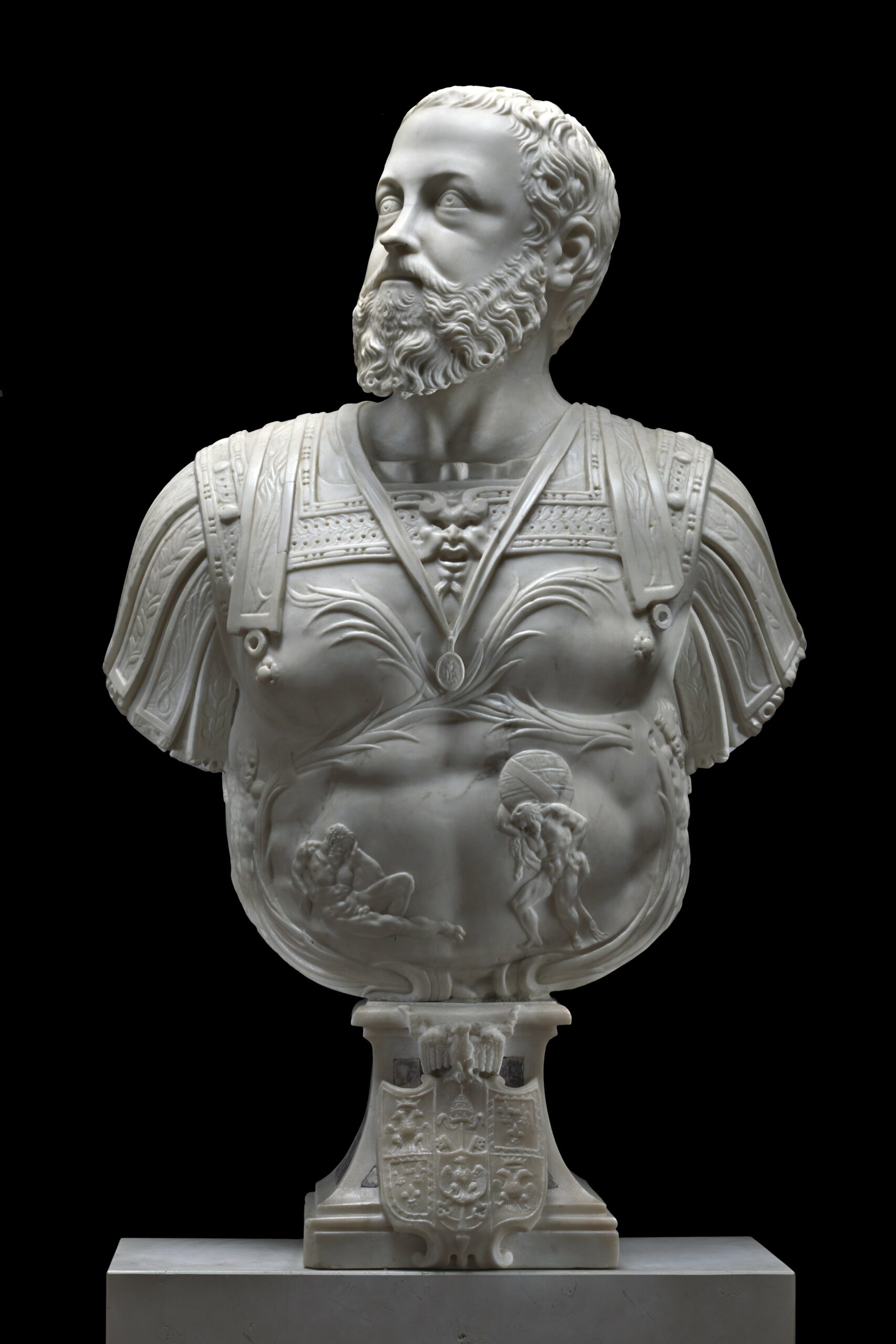The bust was commissioned by Ercole II to the sculptor Prospero Sogari, known as il Clemente, and was to be placed in the ‘Camera della Pazienza’ (Patience Chamber), the most prestigious and representative space in the Estense Castle. A note of payment dated 15 May 1554 suggests that the work was made just before and reports ‘To maistro Prospero da Reggio scultore scudi cento d’oro in oro che gli ha donato Sua Eccellentia per havere sculpito de marmo la testa de Sua predetta Eccellentia’ (Modena, State Archive, Mandati Sciolti, filza 39, no. 58, 15 May 1554).
The sculpture in its formal elegance and characterisation of the face succeeds in consistently declining the Roman models of the imperial age. The portrait is characterised by the proud and intense gaze, accentuated by the slightly raised face turned to the right. The face shows well-defined physiognomic features: the high, broad forehead, the small, upturned nose, the beard and curly moustache.
The sculptor’s true talent is evident in the execution of the fine details on the ancient-style lorica worn by Ercole. The cuirass is decorated on the sides by two caryatids, while two intertwined palm branches frame two figures, the one lying down is Atlas, while in the other is Ercole depicted holding up the celestial vault, the mythological hero with whom the Duke, sharing his name, often liked to identify himself. The two figures, symbols of patience and strength, represent the main qualities in which Ercole mirrors himself, so much so that they were carved into his official portrait as a demonstration of the virtues that inspire him in both political actions and government responsibilities. The Duke wears around his neck a small cameo depicting the feat of Patience. The Este coat of arms is sculpted on the pedestal supporting the bust.
The pedestal is an integral part of the sculpture and completes the allegory of the virtues relating to the Duke, in fact a bas-relief is inserted here in which Patience is again represented according to the iconographic model proposed by Giorgio Vasari. The front of the base is decorated with a large oval medallion surrounded by elegant festoons held by two figures of satyrs. In the centre of the medallion is depicted the allegory of Patience conceived as a young woman tied by a chain to her foot who awaits the breaking of it by the wear and tear of a falling drop.
Originally placed in the Camera della Pazienza, the bust was later transferred to Palazzo dei Diamanti. After arriving in Modena following the Devolution, the bust was moved to Bologna, to the Church of San Michele in Bosco, which served as a repository for works of art from suppressed churches and convents.








